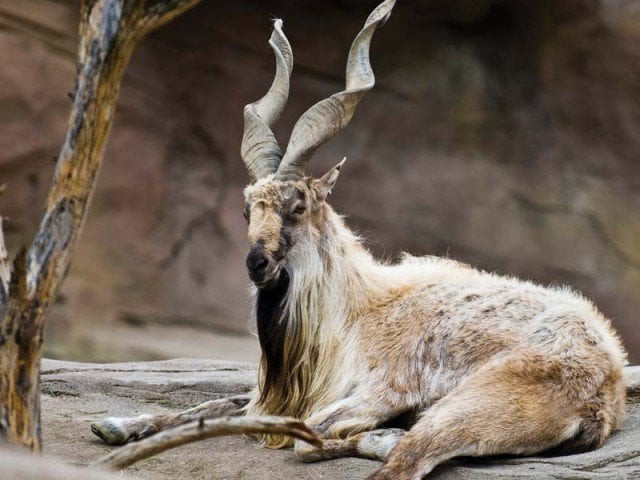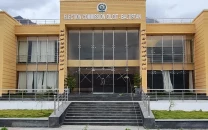Trophy hunting programme: G-B sets $67,500 as hunting fee for markhor
Permits for four markhors, 60 ibexes and eight blue sheep auctioned

Permits for four markhors, 60 ibexes and eight blue sheep auctioned. PHOTO: FILE
The permit auction ceremony was held in Gilgit on Thursday. It was presided over by G-B Forest and Wildlife Secretary Sajjad Haider and attended by a large number of wildlife department officials.
The hunting permits for four markhors, 60 ibexes and eight blue sheep were auctioned in Gilgit this week. The licence fees for markhors, Himalayan blue sheep and ibexes have been set at $67,500, $8,800 and $3,000, respectively.
According to an official of G-B wildlife department, auctioning trophy hunting was a step towards conserving wildlife. Speaking to The Express Tribune on Saturday, he said the initiative will lead to the implementation of more techniques of preservation.
He added the hunting fee a markhor had increased this year. “Last year, the hunting permit for markhor was sold at $6,000,” the official added.
Modus operandi
The trophy hunting quota is decided on the basis of annual surveys conducted by wildlife experts. The cost of an animal is fixed according to the population of the species.
“The rarer a species, the higher its cost,” wildlife expert, Gulam Mustafa said.
The backdrop
The trophy hunting programme was initiated in G-B in the early 1990s. The hunting season begins in November and ends in April every year. Threatened species in G-B – markhors in particular – are hunted by foreigners in return for thousands of dollars.
One of the significant features of the trophy hunting programme is that 80% of the hunting fee goes towards the local community while the government spends the remaining 20% on projects for the welfare of forests and biodiversity. The communities use their share on projects aimed at conserving natural resources. The funds are allocated by committees trained by various NGOs in the accounts, planning and management departments.
Living museum
G-B is often referred to as a “living museum.” This is because it is home to a variety of animals. These include Marco Polo sheep, ibex, markhor, urial, blue sheep, lynx, snow leopard, brown and black bear, wolf, fox, marmotte, chakor including Ram chakor and Tibetan wild ass, also known as kiang.
Published in The Express Tribune, November 1st, 2015.


















COMMENTS
Comments are moderated and generally will be posted if they are on-topic and not abusive.
For more information, please see our Comments FAQ